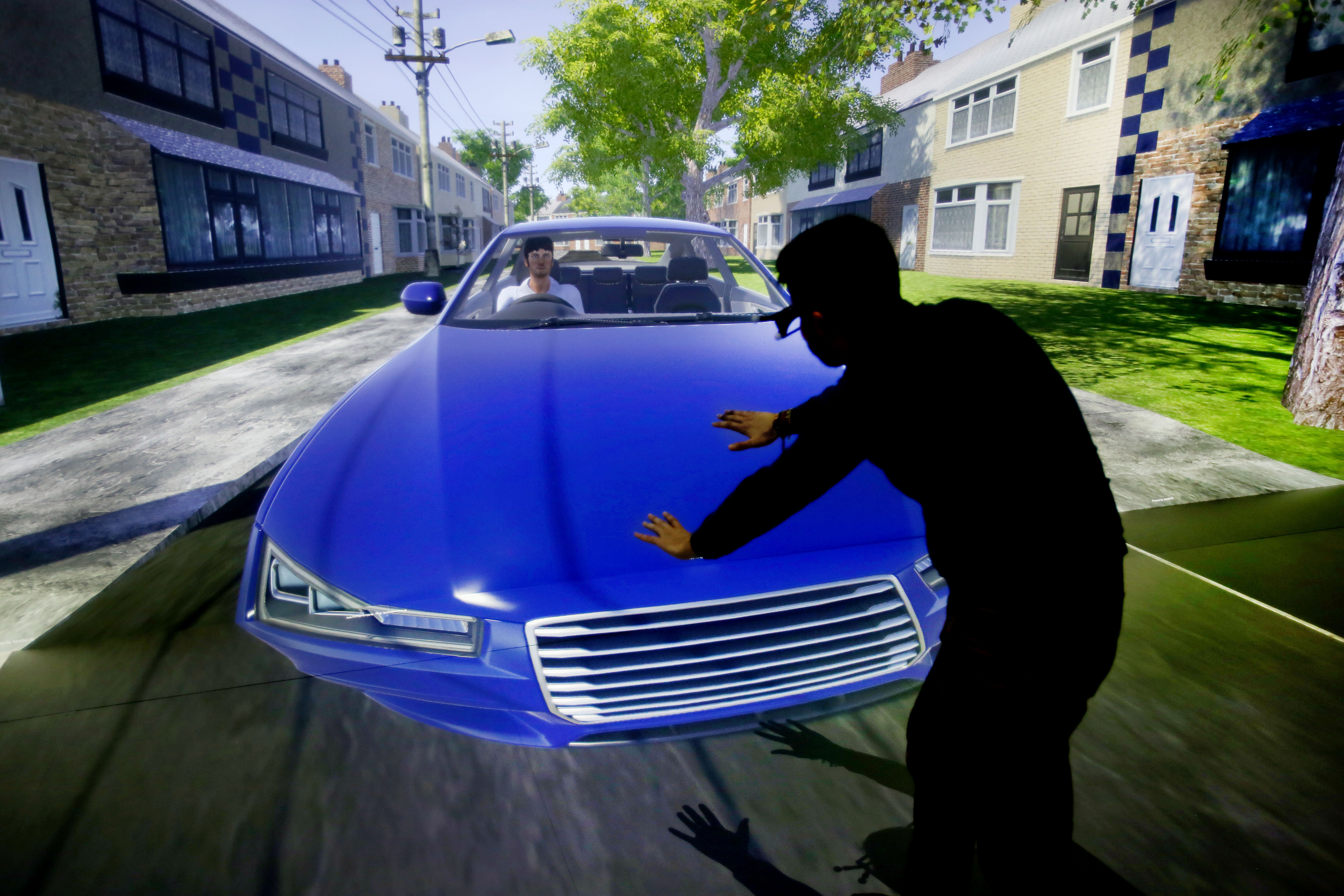This blog article was adapted from a presentation given by John Mould, Commercial Development Manager, ST Engineering Antycip
A car manufacturer takes their physical prototype on a test track and the driver puts on a mixed reality (MR) headset. Behind the driver, another engineer with a laptop helps to deliver computer generated content to overlay new vehicle interior concepts and other virtual elements to augment the drivers experience.
Instantly, the driver is driving on this real test track environment and is able to engage with the latest human machines interfaces they are currently testing in context to a real-world environment.
Here, the user can discover how the technologies may support varied driving situations, as they are able to safely introduce hazards such as animals crossing and use their findings to test various elements of future car development – such as heads up displays, new sensors and user interfaces to improve the prototype.
These are mixed-reality test drives, where virtual elements are inserted into a VR device for engineers and designers to iterate the best vehicles.
VR is no longer just a technological fad used for entertainment purposes but a solution for today’s business challenges.
It offers a wide variety of options, fosters virtual collaboration and provides safe environments for research.
Modern VR has two distinct approaches – personal and group VR. Single-user experiences are delivered via a head-mounted display.
Previously, users had only pixelated views of the virtual world. But professional-level units such as those manufactured by VR company Varjo now deliver visuals akin to 20/20 vision.
Integrated eye-tracking can also be tuned to the individual so that the display is married to their eyes. Sensors like tech firm Ultraleap’s Motion Controller can be mounted on VR devices to track real hands in the virtual world to enable interaction.
While older devices had cumbersome video cables that restricted the user’s range of movement, advancements in wireless image generation hardware today free you from these constraints.
Bigger groups can now collaborate through large-scale displays using lightweight and less intrusive 3D-capable eyewear. These projections include multi-projector VR spaces, domes and curved screen displays, and portable systems for events.
They offer an advantage over personal head-mounted displays: Users are able to view their colleagues’ facial expressions and body language while exploring the same content side by side.
With such rapid developments, businesses are able to tap these technologies in crises and beyond. The COVID-19 pandemic has highlighted many operational challenges and forced organisations to reconsider the necessity of business travel and expenditure.
But even before the virus struck, companies worldwide already had a growing interest to bring their stakeholders together in a virtual space. Industry trade shows are also going virtual to avoid the current issues associated with large gatherings.
These collaborations are made possible by software that can use over 200 industry-standard applications with a head-mounted display. By launching the software in 2D, it instantaneously transports your 3D models into a virtual world, taking care of depth perception, spatial tracking and interaction.
Now you can organise remote meetings efficiently and safely with colleagues from different locations, see their virtual avatars in the same virtual environments and comprehend changes that you make immediately.
By using VR technology, sharing and collaborating with virtual datasets is a reality that we can realise. It also makes VR easy for organisations to adopt as part of their virtual prototyping and research workflows.
When businesses employ VR, they create a safe space for users to experience the possible and the impossible. Training can be conducted and repeated with defined conditions so that results can be instantly analysed and progress tracked.
Mistakes result in no consequences for trainees, which saves organisations potential costs related to real equipment. Using VR in research also offers understanding for sciences that may be impossible to realise outside a computer-generated world.
Other factors include safe testing with real-world accuracies and exploring the human condition through psychological and physical experiments. With countless applications across different markets, VR can be adapted to suit your specific needs and requirements.
ST Engineering Antycip has delivered many of such diverse custom displays. For example, the University of Leeds in the United Kingdom wanted a VR space to research the interactions of pedestrians with automated vehicles and to look into future transport studies.
The Highly Immersive Kinematic Experimental Research (HIKER) pedestrian lab was launched in September 2019 using a VR Cave Automatic Virtual Environment (Cave) system. One of the largest Cave-based pedestrian simulators in the world, the HIKER Cave is a cube-shaped VR space with images projected onto its surfaces to create an immersive environment.


It enables researchers to fully track the position of users who are wearing devices – every limb and their head position – as they traverse and interact within that space. An eye-tracking solution allows the user’s gaze to be recorded and correlated with the events in the synthetic environment.
This is useful for studying gap acceptance when crossing a road and what the average person is looking out for. The data collected is interpreted to see how humans and machines in cities can cohabit safely in the future.
VR is a technology that is growing in its use cases, capabilities and technological breakthroughs. With endless possibilities for size, shape and immersive interactive capabilities, and more innovations on the horizon, the future is exciting.
For more information on Kinematic Experimental Research (HIKER), go to https://steantycip.com/projects/hiker-pedestrian-cave/
Contact us